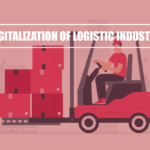The Indian education sector has a lot of hope, with elements of concern too, on the changes it will see in 2020 as India has the world’s largest population in the age bracket 3 to 23 years which highlights the large addressable market for this sector. Globally, the Indian Education sector is amongst the largest, with an extensive network of more than 1.4 million schools – with over 200 million students enrolled and more than 850 universities and 40,000 higher education institutes and is expanding rapidly in light of rising income levels and growing demand for quality education in the country and the education sector in India is estimated to be worth USD 91.7 billion and is expected to witness a major growth in the coming years. Gross enrolment in classes 1-5 reduced from 114% in 2008-09 to 99% in 2013-14. The above-100% enrolment rate in 2008-09 indicates that students enrolled in classes 1-5 included those younger than six or older than 10 years but the prime concerns in the sector, at an international level, including China taking a lead in research output.
The education sector in India is a mix of government-operated & privately operated educational institutions and allied education products & services providers. India has a significant young population that calls for a robust education sector to harness the potential for human capital while the industry in India can be broadly classified into two categories; the formal education industry comprising schools, colleges and universities and the tutorial industry comprising private tutorials and coaching institutes. In the past five years, India has seen some leading institutions lay greater emphasis on research. The sector is highly influenced by various government schemes and policies launched primarily to improve the quality of education and the planned expenditure through several schemes and globally, the nation is ranked 1st in terms of the number of universities. Literacy in India is one of the key deterrents to the socio-economic progress of the country. The Indian literacy rate is currently 76%.
Most of the schools, colleges, and universities in the country were operated by the state, union or the local government. However, the scenario saw a change in the last two decades, India’s enrolment rate in primary education is comparable to that of developed countries but, India falls behind these countries after class 6. Domestic issues include the shortage of top faculty and remuneration as board members of some of the leading management institutions have called for greater incentives – both financial and career growth – to faculty members. Although there has been a significant increase in India’s literacy levels, it still has the largest illiterate population in the world, with its literacy rate below the world average of 86%. In higher education, India’s enrolment rate stands at about 21% compared to about 62% in the UK and Germany, and 95% in the USA. Starting in 2020, the country will move towards bringing in critical changes in the Indian education system. The policy draft that was put into the public domain triggered a series of discussions, which only meant there was tremendous interest to know how India will go about education in the future as the education sector in India has witnessed a paradigm shift in recent times.
The past decade saw some major touchpoints from a policy perspective.























Write a Reply or Comment